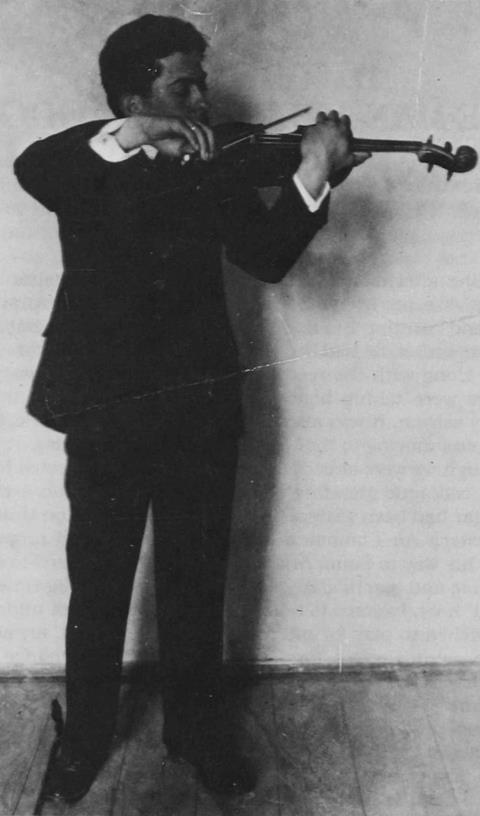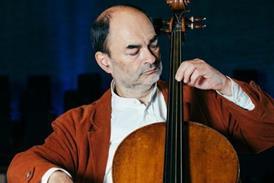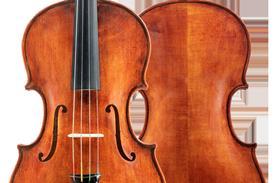How does the positioning of fingers on the bow affect sound and flexibility? Rok Klopčič examines the bow holds of leading violinists and pedagogues in this extract from October 2007

The following is an extract from the article ’Violin Bow Hold: No holds barred’ from October 2007. To read the full article, click here
Traditionally, Carl Flesch’s classification of three main bow holds in his book The Art of Violin Playing has dominated discussions about the ideal position of the right hand. I believe that these classifications focus on matters of relatively minor significance. Instead, here I will look at the element of bow hold I consider the most important: the position of the fingers in relation to that of the thumb.
Consider the thumb, fixed at the end of the frog, as the centre of all bow holds. Then, the crucial aspect to examine is the variation in the distance of the four fingers from this centre in the technique of different players. Without moving the thumb, the rest of the hand can glide up or down the stick, towards or away from the point of the bow. Every tiny change in the distance of the fingers from the thumb influences the entire technique of the right hand and can change the quality of the tone produced. It is therefore worth investigating the different ways in which this aspect of bow hold has been approached by various artists, and which techniques have been recommended by different teachers. Looking at the possibilities and the players who used them can help us reach a better understanding of the options and their varied effects.
Two very different violinists, Max Rostal and Tossy Spivakovsky, recommended quite different positions for the hand in relation to the thumb. In his book Handbuch zum Geigenspiel, Rostal put forward the view that the thumb should be under the first finger or between the first and second fingers.
I played using this technique for several years and would not recommend it. Spivakovsky preferred a position that placed the thumb under the little finger, or between the third and little fingers. His bow hold may have contributed to his excellent tone, which I was able to admire during his recital at London’s Royal Festival Hall in 1957.
Read: 7 bow hold insights from historical string players
I was not alone: Samuel Applebaum referred to Spivakovsky’s legato during this performance as ‘miraculous’. After reading Gaylord Yost’s thought-provoking book The Spivakovsky Way of Bowing I experimented for a few days with this bow hold, unfortunately without encouraging results. However, Spivakovsky’s shining example arguably justifies further experimentation: there may be some violinists who have an aptitude for this technique.
In Samuel and Sada Applebaum’s book With the Artists, Harold Berkley is quoted as saying: ‘Most artists agree that the centre of balance is between the thumb and the second finger.’ This view is upheld by various books and articles in which other artists and teachers reveal a similar belief in the synergy between the thumb and the second finger. Paul Rolland refers to the ‘fulcrum’ and the ‘axis’, Demetrius Dounis to ‘the centre point’ and ‘the centre of the hold’, Lucien Capet to ‘le centre’, Ivan Galamian to the ‘circle’ and Isaac Stern to ‘the centre of pressure, the circle’. Pierre Baillot, Henryk Wieniawski, Abram Ilich Yampolsky, Percival Hodgson and Yehudi Menuhin are also known to have shared a belief in this bow-hold technique.
When the bow is held in this manner, a fulcrum is created by the thumb and second finger, with a lever on each side: the first finger exerts positive pressure, and the fourth finger negative pressure. The application of both kinds of pressure is essential to attain a dynamically even tone: on a down bow, when the bow is approaching its tip, it is necessary to increase the positive pressure; on an up bow, when the bow is approaching its frog, negative pressure should be applied. These are the basics, but various artists have found ingenious ways to create a fuller, stronger, more beautiful tone with less physical effort, by making additional small changes in the placement of the fingers and in the bowing action.



































1 Readers' comment